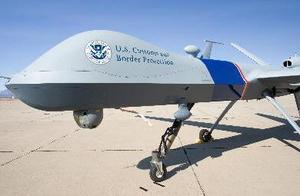Mexico warU.S. UAVs track drug gangs in Mexico
The war in Mexico — between the drug cartels and the government, and among the drug cartels themselves — has been increasingly spilling across the border into the United States; some cartels now maintain outposts in the Arizona desert; to gather more information about the cartels, and to help the Mexican authorities in their war against them, the United States has been flying unarmed surveillance UAVs over Mexico; the flights are made in coordination with and at the request of the Mexican government; the Mexican authorities also choose the target of drone surveillance; drones had gathered intelligence that led to the arrest in Mexico of several suspects in connection with the murder of a U.S. immigration agent, Jaime Zapata

UAVs track Mexican drug gangs // Source: avstop.com
The United States has been flying UAVs over Mexico since February to gather intelligence on major drug cartels, the Mexican government has confirmed.
The flights were made at Mexico’s request and were supervised by the Mexican air force and other agencies.
The BBC reports that it is the latest sign of growing U.S. involvement in Mexico’s campaign against violent drugs gangs.
Mexico confirmed the missions had been taking place after they were revealed by the New York Times. Most of the drone flights have been over northern border areas, the scene of much of the drug-related violence that has left more than 34,000 dead since late 2006.
The New York Times report said the missions had been kept secret because of Mexican legal restraints and sensitivities over sovereignty.
In a statement, Mexico’s National Security Council said the high-altitude flights had been carried out with “unrestricted respect” for Mexican law.
“These operations are always carried out with the authorization, vigilance and operative supervision of national agencies, including the Mexican Air Force,” the statement said.
It added that the targets of surveillance were determined by Mexican authorities, and that information gathered had been “particularly useful.”
Unnamed U.S. officials told the New York Times that drones had gathered intelligence that led to the arrest in Mexico of several suspects in connection with the murder of a U.S. immigration agent, Jaime Zapata.
President Barack Obama and his Mexican counterpart, Felipe Calderon, formally agreed to continue the surveillance flights during talks in Washington on 3 March, which included a frank exchange of grievances, Mexican and U.S. officials said.
In state department cables released by Wikileaks and published by the Guardian newspaper last December, the U.S. ambassador to Mexico, Carlos Pascual, painted an unflattering portrait of the Mexican security forces, and questioned whether President Calderon could win his war on drugs.
Foreign military and law enforcement agents can only operate in Mexico under extremely limited conditions, according to the Mexican constitution.
The rising violence in Mexico, however, has seen the United States and Mexico deepen their co-operation to tackle a common threat.
